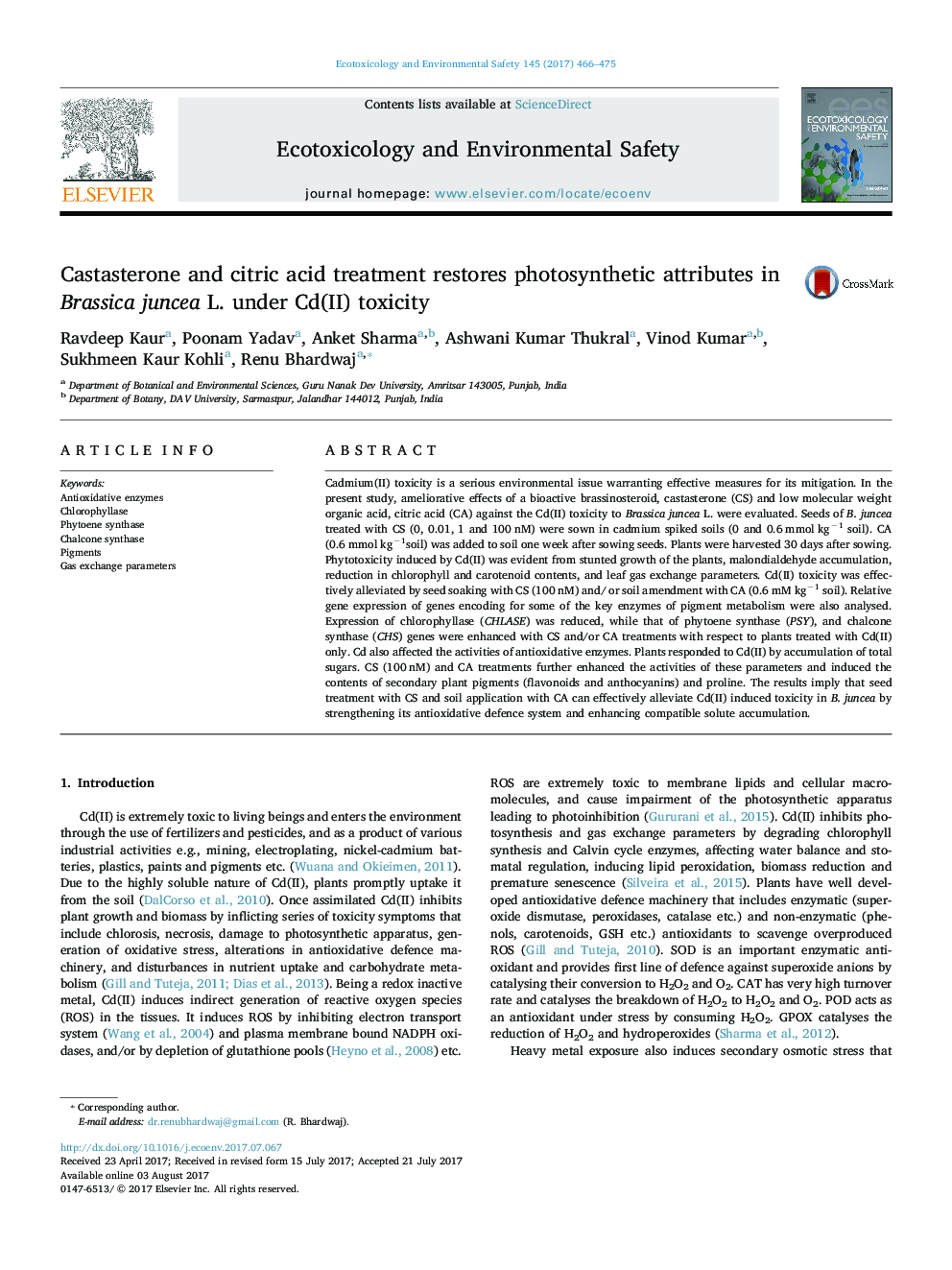| Article ID | Journal | Published Year | Pages | File Type |
|---|---|---|---|---|
| 5747729 | Ecotoxicology and Environmental Safety | 2017 | 10 Pages |
â¢Castasterone (CS) and citric acid (CA) ameliorate Cd(II) toxicity to Brassica juncea L.â¢Î²-regression coefficients revealed a better effect of CS in improving the growth and photosynthesis of B. juncea.â¢CS and CA treatments alone or in combination modulated expression of CHLASE, PSY and CHS genes under Cd(II) toxicity.
Cadmium(II) toxicity is a serious environmental issue warranting effective measures for its mitigation. In the present study, ameliorative effects of a bioactive brassinosteroid, castasterone (CS) and low molecular weight organic acid, citric acid (CA) against the Cd(II) toxicity to Brassica juncea L. were evaluated. Seeds of B. juncea treated with CS (0, 0.01, 1 and 100 nM) were sown in cadmium spiked soils (0 and 0.6 mmol kgâ1 soil). CA (0.6 mmol kgâ1soil) was added to soil one week after sowing seeds. Plants were harvested 30 days after sowing. Phytotoxicity induced by Cd(II) was evident from stunted growth of the plants, malondialdehyde accumulation, reduction in chlorophyll and carotenoid contents, and leaf gas exchange parameters. Cd(II) toxicity was effectively alleviated by seed soaking with CS (100 nM) and/ or soil amendment with CA (0.6 mM kgâ1 soil). Relative gene expression of genes encoding for some of the key enzymes of pigment metabolism were also analysed. Expression of chlorophyllase (CHLASE) was reduced, while that of phytoene synthase (PSY), and chalcone synthase (CHS) genes were enhanced with CS and/or CA treatments with respect to plants treated with Cd(II) only. Cd also affected the activities of antioxidative enzymes. Plants responded to Cd(II) by accumulation of total sugars. CS (100 nM) and CA treatments further enhanced the activities of these parameters and induced the contents of secondary plant pigments (flavonoids and anthocyanins) and proline. The results imply that seed treatment with CS and soil application with CA can effectively alleviate Cd(II) induced toxicity in B. juncea by strengthening its antioxidative defence system and enhancing compatible solute accumulation.
